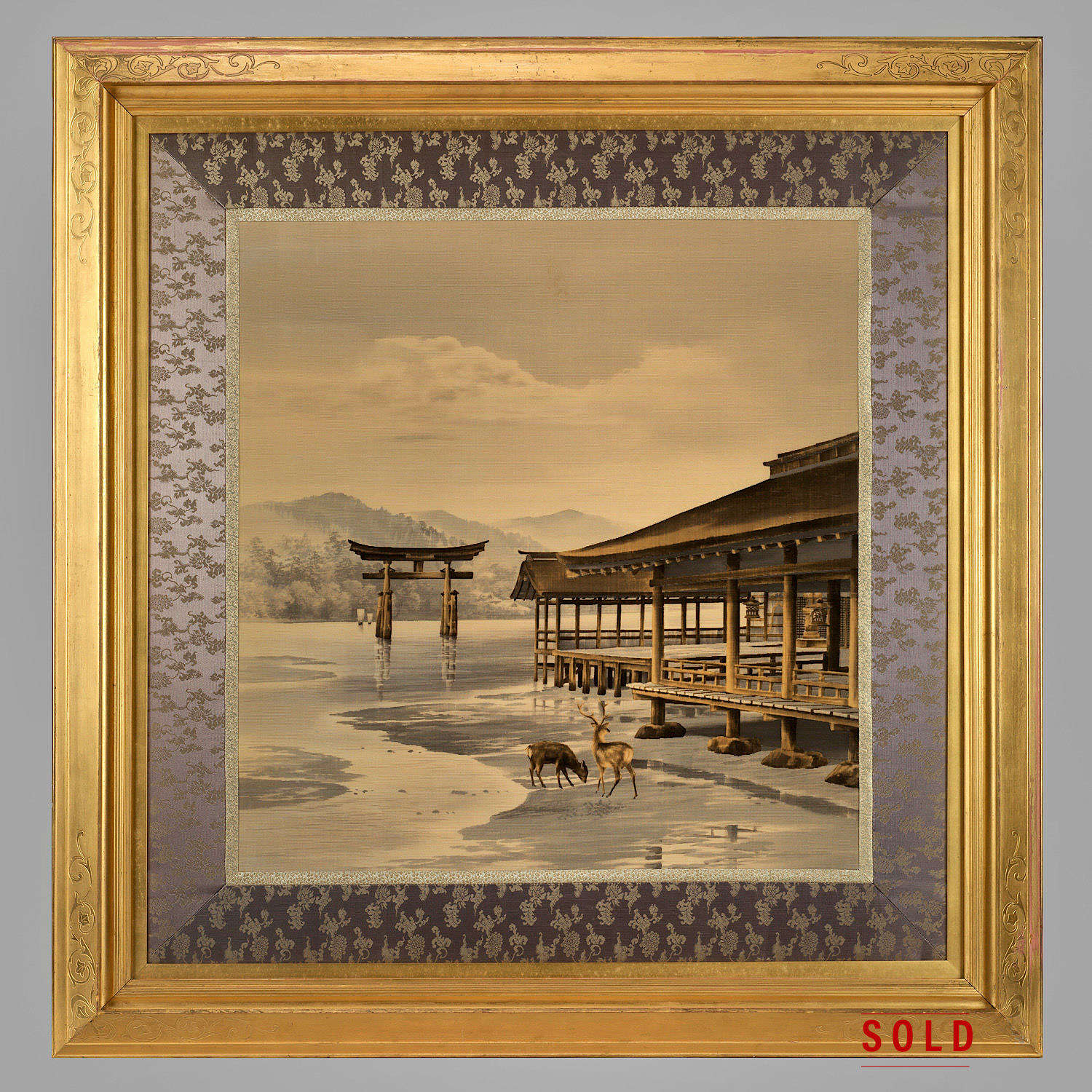




Code: 10190
Dimensions:
Japanese Yūzen-Birodo cut velvet 天鵝絨 of the Itsukushima Shrine with its Torii gate in the foreground and a pair of sika deers grazing at low tide with original gilt wood frame and a silk pattern design mount, Meiji period 1868-1912.
The Itsukushima Shrine 厳島神社 on the island of Miyajima 宮島 in Hiroshima Prefecture is a UNESCO World Heritage site.
The Shrine with its Torii gate were built over water in the 12th Century giving the impression at high tide to be floating in the sea. At low tide visitors can walk out of the bay and see the gate up close.
The wild sika deer were considered sacred messengers to the gods in Shinto religion, and today they are still protected and hang out near the shrine.
In 1868 the leading textile firm Nishimura Sozaemon-Kyoto 西村総左衛門 invented this technique. The velvet was woven by passing the threads over fine metal wires parallel to the woof and then cut to form the pile. The precise cutting would achieve a chiaroscuro three-dimensional effect.The first example of Yūzen-Birodo was exhibited at the Second National Industrial Exhibition in Tokyo in 1881.
Reference: 'Threads of silk and gold, Ornamental Textiles from Meiji Japan', by H.T. McDermott and C. Pollard, The Oxford Ashmolean Museum Catalogue Exhibition, 2012, pp. 160-169.
For a similar example see : 'Splendors of Meiji, Treasures of Imperial Japan' by Joe Earle, the Kibo Foundation 2002, no. 280 pg. 393.
All our pieces come with a BADA Certificate of Provenance (The British Antiques Dealer's Association) and are inclusive of free worldwide shipping & insurance.